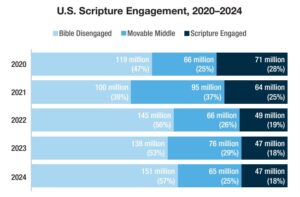
SEOUL, South Korea (BP)–As a new year begins, uncertainty continues to mount around embryonic stem cell research with the December revelations that a South Korean scientist has fabricated his much-heralded breakthroughs.
An investigative panel at Seoul National University found Dec. 29 that Hwang Woo Suk failed to produce any of the 11 patient-specific stem cell lines he had claimed to develop in a paper published in the journal Science last May.
Hwang’s research had been considered a milestone in the quest to use stem cells harvested from human embryos to cure diseases such as Alzheimer’s and diabetes.
Bioethicist C. Ben Mitchell told Baptist Press, “This is a very sad episode in every way.
“The scandal shows how important it is that science not be done in a moral vacuum. Science divorced from ethics is technological tyranny. Hwang was apparently the victim of his own aspirations for fame and the media hype surrounding embryonic stem cell research. Both contributed to his downfall,” said Mitchell, associate professor of bioethics at Trinity Evangelical Divinity School in suburban Chicago and a consultant for the Southern Baptist Ethics & Religious Liberty Commission.
“Falsification of research data is a violation of every canon of legitimate science,” Mitchell continued. “Unless researchers keep public trust, a backlash against research is bound to happen. Experiments on human embryos is a violation of that trust. Reporting false data only adds insult to injury.”
News of the tainted research first surfaced in mid-December, when one of the paper’s coauthors told a Korean television station Hwang privately had admitted that nine of the 11 stem cell lines he had said he created didn’t exist. Immediately, officials at Seoul National University, where Hwang’s team was based, launched an investigation into the allegations despite Hwang’s public insistence that the lines were legitimate.
When the panel determined that not even one of the stem cell lines Hwang claimed to produce matched with the cells of the patients who provided nuclei in a DNA test, editors of Science opted to retract the May paper and said they would seek information about another paper they published two years ago in which Hwang claimed to have created the first cloned human embryonic stem cells, according to The New York Times Dec. 31.
Suspicion also surrounds whether he legitimately created the first cloned dog, as was published in the journal Nature in August. The same panel that concluded the 11 stem cell lines were fabricated is looking into Hwang’s other supposed breakthroughs and is expected to report on the findings later this month.
Hwang continues to insist his work is authentic. Though he has not been seen in public for more than a week and resigned his post as professor at Seoul National University, he reportedly told the South Korean Buddhist newspaper Beopbo, “I definitely have the source technology to produce tailored embryonic stem cells. I can replicate the process any time.”
Even so, South Korea has suffered a major blow, given that Hwang’s apparent success had led the nation’s president to unveil the World Stem Cell Hub in October in order to secure South Korea’s place as the leader in stem cell research. The lab built to house Hwang’s team is now mostly deserted, according to a report by Newsweek for its upcoming Jan. 9 issue.
Harvey Marcovitch, chairman of the Committee on Publication Ethics, a London-based group that advises scientific journal editors on ways to detect frauds, told the Los Angeles Times that sometimes researchers fabricate evidence because they’re convinced their theories are correct and are too impatient to take the time to prove them.
“Vast amounts of money will be poured into stem cell research in the coming decades because everyone thinks that’s the future of medicine,” Marcovitch said. “The temptation [to cheat] is great.”
Embryonic stem cell research has failed to produce any successful therapies in human beings and has been plagued by the development of tumors in lab animals. Meanwhile, research on stem cells from non-embryonic sources has produced treatments for at least 65 ailments, according to Do No Harm, a coalition promoting ethics in research. These treatments include spinal cord injuries, rheumatoid arthritis, lupus, multiple sclerosis and sickle cell anemia. Taking stem cells from non-embryonic sources -– such as bone marrow and umbilical cord blood -– does not harm the donor.
Among reports of advances in adult stem cell research in recent months: Harvard University scientists revealed they have transformed skin cells into embryonic-like stem cells without the use of human eggs or the creation of embryos; a team of Texas and British researchers revealed they have generated what appear to be embryonic stem cells from umbilical cord blood; and University of Pittsburgh scientists said they have discovered embryonic-like stem cells in the placenta.
President Bush’s policy barring federal funds for stem cell research that destroys embryos permits grants for embryonic stem cell lines in existence when he announced his policy in 2001. The federal government also funds stem cell research on adult and other non-embryonic stem cells.
–30–













